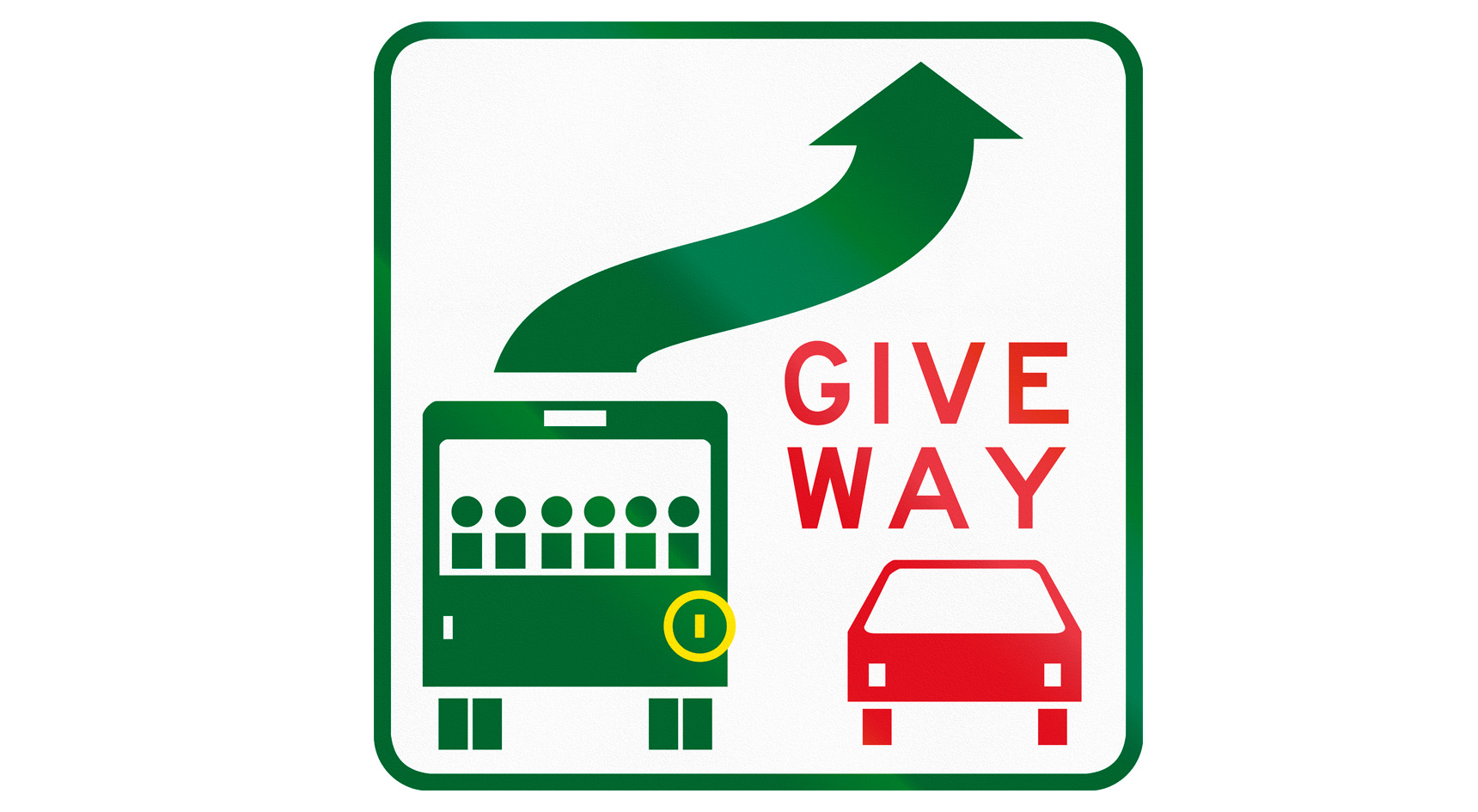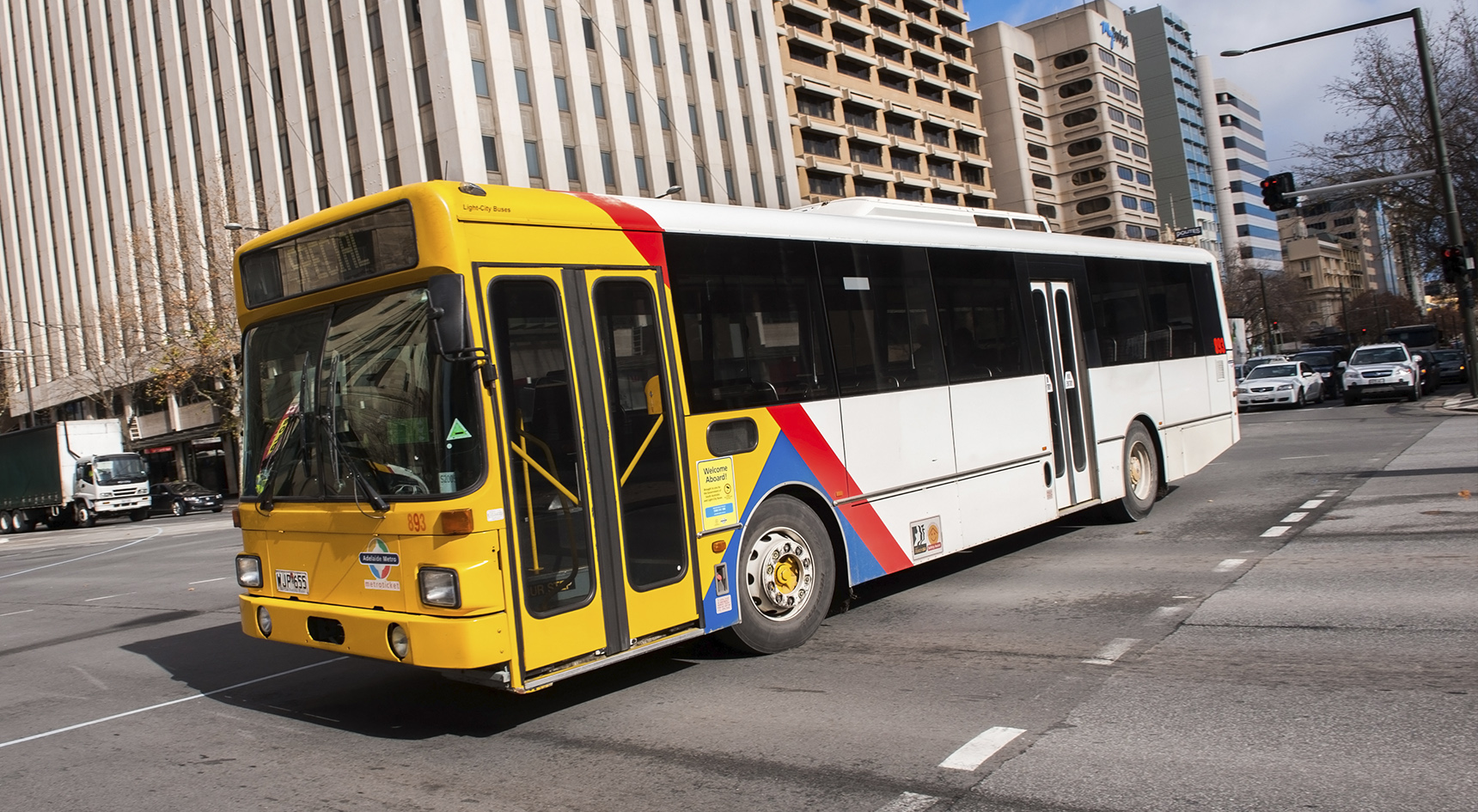The give way to buses rule explained

According to data obtained by RAA, there were 1523 crashes involving buses and other vehicles between 2016 and 2020. In 56 per cent of these incidents, the bus driver wasn’t at fault.
As a regular user of public transport, a big issue I see time and time again is motorists failing to give way to buses. That’s why we’ve got the lowdown on this important road rule, plus tips on how to avoid a bingle with a bus.
Hail (and give way) to the bus driver
You’ve probably seen the give way sign on the back of Adelaide Metro buses. The Australian Road Rules also state motorists are required to give way to buses. But when?
When in a built-up area, motorists must give way to any bus displaying the give way to buses sign (see below) if the bus is indicating to move off from the kerb.
On a multi-lane road, this rule only applies to the left lane. If the left lane is a bike lane or obstructed by a parked car, drivers in the far-right lane must also give way.
If the bus does not display the give way sign, then there’s no legal requirement for a driver to give way to the bus while it enters traffic.
The rule only applies when a bus is entering traffic, not changing lanes.

Are buses required to give way to motorists?
The onus isn’t solely on the motorist.
RAA Senior Manager of Safety and Infrastructure, Charles Mountain, says bus drivers have a duty of care.
“They must indicate for at least five seconds before moving off the kerb and into traffic,” Mr Mountain says.
While bus drivers must provide sufficient warning to other road users, motorists must always drive with caution and be aware of their surroundings.
Penalties
When I was learning to drive back in 1992, I was told to always give way to buses. To be honest, I didn’t realise it was a road rule that, if broken, you could be fined.
Today, the penalty for failing to give way to a merging bus can be steep. In fact, you face a $231 fine, plus a $92 Victims of Crime Levy and incur three demerit points.
How to safely manoeuvre around a stationary bus
Let us set the scene. You’re approaching a bus stopped on the side of the road as it drops off or picks up passengers. Before making a dash to manoeuvre around the bus and into the adjacent lane, follow these five steps.
1. Reduce your speed as you’re approaching.
2. Keep a safe distance to ensure there’s enough space to safely enter the adjacent lane. Don’t get too close otherwise you may have to pull out sharply in order to clear the rear of the bus.
3. Check your rear-view and side mirrors for oncoming vehicles travelling behind you in the right-hand lane. Flick your indicator on for at least five seconds to signal your intention.
4. Wait for a safe gap before returning to the left lane to get in front of the bus.
5. If it’s not safe to manoeuvre around, sit back and be patient until the bus moves from the kerb.


